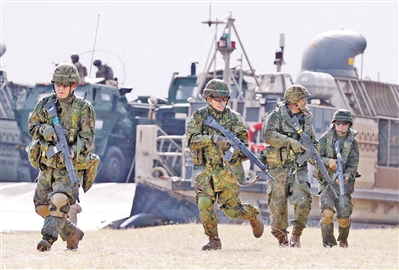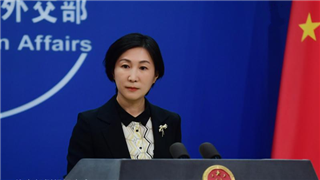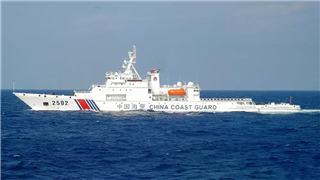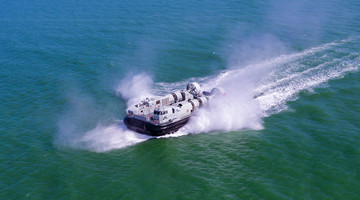
Japanese cabinet's release of three security policy documents – National Security Strategy (NSS), National Defense Strategy (NDS) and Defense Buildup Program (DBP)– on December 16 marked a sea change in the country's post-WWII security and defense strategies. Compared with before, the new defense strategy is more radical about surrounding security threats and makes aggressive strategic design and systematic deployments for future military development in two ways – strengthening counterattack capability and increasing military budget by a large margin. Such a drastic U-turn has caused doubts and worries both in Japan and the international community.
Japan is shaking off the strategic restriction to "defense only".
The three newly revised documents have assumed a more radical tone regarding the surrounding security situation, and Japan's once again upgraded wording about the threats posed by countries like DPRK and Russia is just an excuse for its strategic shift. On that basis, its new defense strategy displays three marked changes.
First, it is more outspoken about military capacity building. The NDS makes it clear that JSDF must have the capability of counterattack and sustained operation, and allows JSDF to acquire stand-off defense capabilities that will enable it to directly attack military targets on an enemy state's territory from outside its defense zone. This officially legitimizes through a state policy the so-called “preemptive attack capability” that the Japanese defense circle has been dreaming about.
Second, defense budget increases more drastically. The DBP has increased the total defense budget for the next five years to 43 trillion Yen (about US$313.4 billion), up almost 60% from the previous five years. When outlining the weapon and equipment development plan, the document asks the JSDF to gradually deploy the modified Type 12 missiles with a firing range of more than 1,000km and the US-made JASSM stealthy cruise missile, purchase more than 500 US Tomahawk cruise missiles, and build seven shore-to-ship missile regiments, two hypersonic missile battalions, and two long-range missile combat units.
Third, Japan is more eager to develop combat capabilities in emerging domains. The NSS stresses that Japan will intensify its combat deployments in emerging domains such as space warfare, cyber warfare, and electromagnetic warfare, with a special focus on advancing its cyber defense capability to be commensurate with that of western powers and introducing proactive cyber defense terms.
Japan is moving faster toward “independent defense”.
Japan's about-face in defense policy is ultimately aimed to smash the restrictions imposed upon it by the post-WWII order and realize the so-called “independent defense”, as reflected in three tendencies.
To begin with, Japan takes the opportunity of releasing the three documents to elevate its previous tricks of breaking through restrictions and expanding the military into a national strategy. For many years, the Liberal Democratic Party and Japanese defense circle have been clamoring about benchmarking Japan's defense spending against the NATO standard of 2% of GDP and developing the JSDF’s capability to attack enemy bases. Now the three documents have elevated the LDP’s internal consensus into a national strategy, aiming to unify the mind at home in order to coordinate resources for future military buildup.
Secondly, Japan is seeking to realize "independent national defense" under the pretext of responding to America's “bloc confrontation” ploy. It not only imitates the US in naming the NSS and NDS but also follows its steps in determining security threats and borrows its words to describe the threats it thinks imposed by surrounding countries, all to gain the big brother’s favor. It's easy to see that Japan, observing the logic that “America’s enemy is my enemy”, will continue to develop its military in the name of answering to the ally’s demand and take advantage of the blurred line to quickly move toward its goal of “independent defense”.
Thirdly, although Japan has only made sporadic breakthroughs in certain areas of its defense policy, the tendency nurtures a systemic adjustment. Today, it succeeds in making a substantive breakthrough regarding the massive increase in the defense budget and development of counterattack capability; tomorrow it can shake off other restraints as well. Once the bottom line is crossed, its bloating military ambition will take Japan’s defense strategy further astray.











